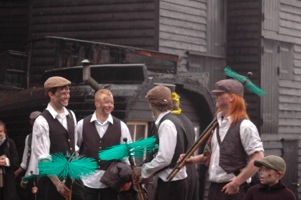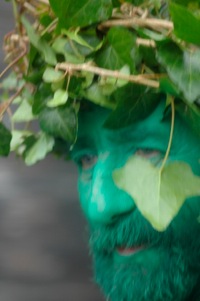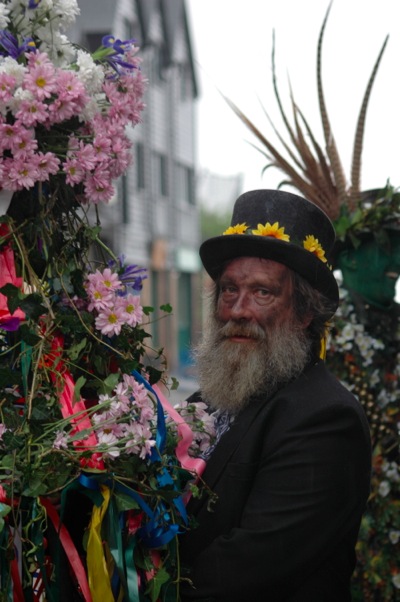pagans, gay bogies on acid,
Pagans
26/11/09 09:34 Filed in: travel
The pagans seem to have had lots of fun at their festivals some of which still live on even now, but adaptations have taken place over the centuries.
The puritans will have made sure that all pagan Rites were stopped or integrated into the church to appease the people and bring them to church. One such is jack of the green celebrated in Hastings
in east Sussex.

This is held on the first of May or Beltrane (day of fire) .
Its origins seem to have started with the Saxons a celebration of the end of winter and the start of the sun.
Peasants would take part in games and feasting the night before, ending with carrying flaming torches into the hills then roll burning wooden wheels into the fields.
These events were stopped by the church but did continue in secret by the participants dressing up and wearing masks, this practice continued up until the late 1700s.


May day continued it stayed an irreverent, raucous occasion. Villages would elect a "Queen of the May" from their eligible young women to rule the crops until Harvest. They would also build a "May Pole", a phallic symbol around which young single men and women would dance, holding on to the ribbons until they became
In the 16th and 17th centuries people developed this practice by making garlands of flowers and leaves for the May Day celebration.
Over the years, these garlands became more and more elaborate with people trying to outdo each other.
By the late 18th century, the celebrations had become so competitive that London Milkmaids carried silver-studded garlands on their heads while the Chimney Sweeps’ garland was so big it covered an entire man!
The Chimney Sweeps’ garland eventually became a costume character in its own right known as "Jack-in-the-Green".
In Hastings there were at least two groups who paraded a Jack-in-the-Green until about 1889.
Shortly after this the celebrations were stopped because of a Parliamentary Act preventing boys from working as Chimney Sweeps (the procession’s main performers) and the Victorian’s dislike of drunken and promiscuous behavior.
The festival was restarted In 1983, by the mad jacks Morris dancers The ‘Jack-in-the-Green Festival of Morris Dancing’ has turned May Day into one of the most important dates on Hastings events calendar.
In an extraordinary splash of vivid greens and movement, a stream of dancers, drummers and performers make their way through the narrow streets of the Old Town, across the seafront and up to the hilltop ruins of Hastings Castle.
Here the Jack is symbolically slain and the spirit of the summer released in a ceremony that’s enjoyed by thousands.

0 Comments

